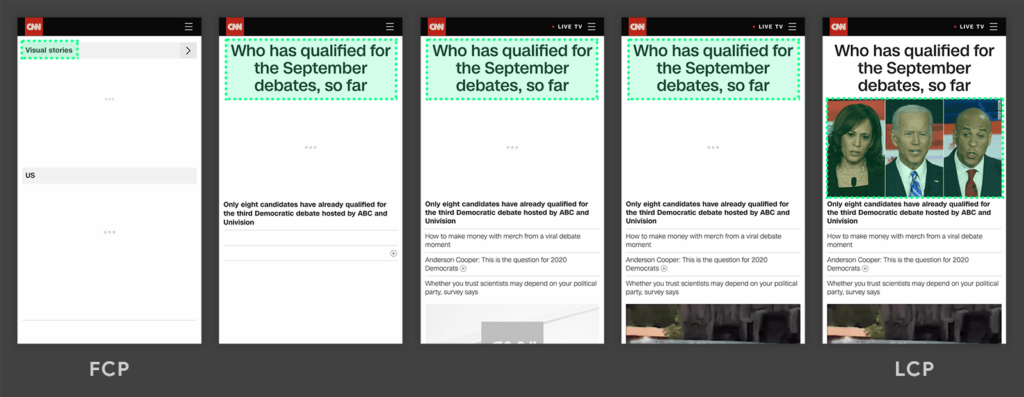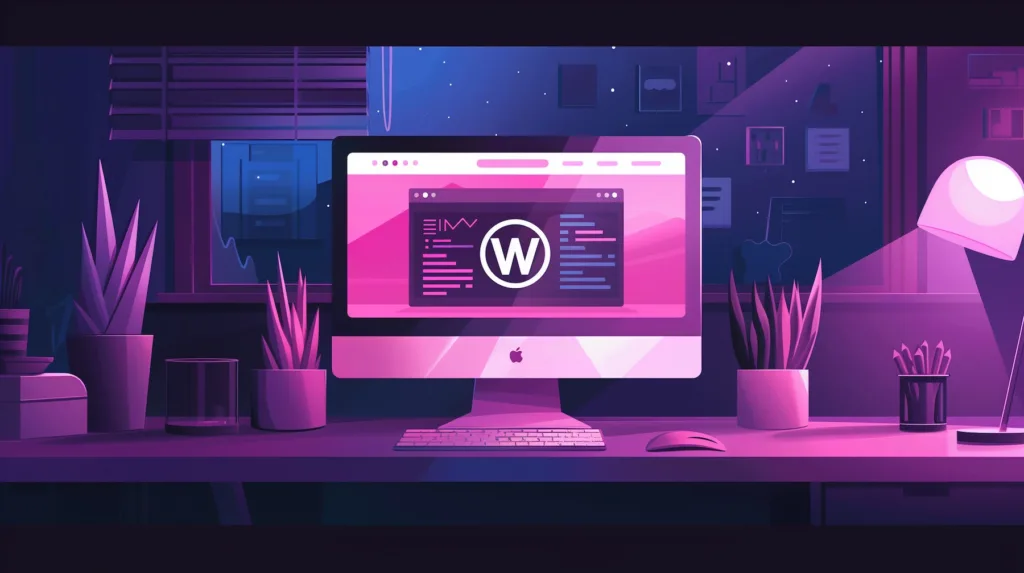Struggling with WordPress speed and trying to get a grasp on the intersection of Core Web Vitals and WordPress performance? You’ve come to the right place. In this guide I’ll explain the difference between WordPress speed and Core Web Vitals, what Core Web Vitals are, as well as common issues and misconceptions related to these performance measurements.
Let’s start with a quick story.
Poor WordPress Speed is Expensive
As a remote worker it takes me exactly 37 seconds to walk from my upstairs bedroom to my downstairs office to begin my work day. Imagine if during my morning “commute”, I lost $435.
That’s the real life story of my good friend Eric. Eric owns a very successful eCommerce business selling health supplements and other items to make people’s bodies feel good. And Eric had a problem. Eric was investing many thousands of dollars into advertising every month. But because his WooCommerce store was too slow, people were hitting the product page, adding their items to the cart, and then while they waited for the cart page to load, they left and never returned.
We noticed this pattern over and over again during peak traffic hours. Eric was losing at least 1 customer every 10 seconds. Each customer had an average order size of $75. SiteCare helped Eric address the slow-loading cart page and revenues increased substantially.
WordPress speed may not be as important to everyone as it was to Eric. That said, the reality is that millions of WordPress website owners are losing opportunities to showcase their work, sell products, capture leads, and tell their stories because their website is too slow or hard to use.
WordPress Speed and Core Web Vitals – What’s the Difference?
WordPress Speed is simple. It really only asks one question: How long does it take for each page of a website to load? When you hear web consultants talk about how “every page should load in under 3 seconds”, ultimately that’s referring to WordPress or website speed.
The measurement of time between when a link is clicked to when the destination is fully-loaded is called Fully Loaded Time.
In the world of the Fast & Furious’ Dom Toretto, WordPress speed is the quarter-mile finish line.
Google Core Web Vitals, however, introduces more nuance and measure more specific components of what Google calls “Page Experience.”
How fast things happen on a website are certainly a factor, but they aren’t the only factor. Core Web Vitals measures a blend of performance, interactivity, and overall user experience.

Core Web Vitals are what I imagine a post-stay survey at the Four Seasons would entail: comprehensive measurement of every facet of the experience.
Introduction to Core Web Vitals
This is Google’s own definition of Core Web Vitals:
Core Web Vitals are the subset of Web Vitals that apply to all web pages, should be measured by all site owners, and are surfaced across all Google tools. Each of the Core Web Vitals represents a distinct facet of the user experience, is measurable in the field, and reflects the real-world experience of a critical user-centric outcome.
Put much more simply: Core Web Vitals measure how fast a page loads its main content, how quickly it responds to user actions, and how stable it is as it loads. These metrics give site owners a clear picture of how real people experience their website’s performance.
Core Web Vitals consists of three key measures, each of which has their own name, accompanying acronym, and threshold.
- Largest Contentful Paint (LCP) – LCP is the amount of time it takes for Google to load the main element, or piece of content, on the web page.
- Cumulative Layout Shift (CLS) – CLS measures how much a page’s layout shifts unexpectedly as it loads.
- Interaction to Next Paint (INP) – INP tracks how long it takes for the screen to visually respond after you interact with a webpage (like clicking a link or button).
And here are the thresholds for each of these measurements:
| Web Vital | Target Score |
|---|---|
| Largest Contentful Paint (LCP) | 2.5 seconds |
| Cumulative Layout Shift (CLS) | 0.1 |
| Interaction to Next Paint (INP) | 200 milliseconds |
Core Web Vitals have three possible scores:
- 🟢 Good
- 🟠 Needs Improvement
- 🔴 Poor
This means that it’s not possible to score 77/100 on a Core Web Vitals test, for example. If someone references a numerical score they’re likely referring to another metric. The only possible scores are Good, Needs Improvement, and Poor.
Examples of LCP, CLS, and INP from Core Web Vitals
Let’s take a look at some examples of LCP, CLS, and INP to have a better understanding of why Google believes these metrics matter and how they impact visitors to your website or store.
Largest Contentful Paint – LCP
As I mentioned, Largest Contentful Paint is the amount of time it takes for the largest element (image, text, etc) on the page to load on a low-bandwidth mobile device.

In this example, the headline image in the CNN news article is the largest element in view. An LCP score measures how long it takes for the main element on a webpage to appear and become fully usable.
The target LCP score is 2.5 seconds or below.
In other words, to have good LCP, Google expects the main element of the page to load in 2.5 seconds or fewer on a low-bandwidth mobile device.
Cumulative Layout Shift – CLS
Cumulative Layout Shift measures movement on the page. Ever tap a link on your phone, only to have it shift under your finger and send you off to the wrong place? It’s the worst!
Here’s an animation that illustrates a website visitor accidentally ordering 56 items when they meant to tap the back button:
This is a very frustrating experience for people browsing the web, so Google wants to measure it and have it improve.
The target CLS score is 0.1. Google has quite the formula for measuring CLS, but simply put, a very low percentage of elements should be shifting or moving on the page during the initial load.
Interaction to Next Paint – INP
INP is the newest Web Vital from Google, and it measures how long it takes something on the page to happen once a website visitor has clicked or tapped. If there’s a significant delay in a menu expanding or a form submitting, that will lower the page’s INP score.
Here are examples of good and and bad INP experiences side-by-side:
The target INP score is 200ms, meaning it should take no more than 200ms for the intended action to happen once the website visitor has clicked or tapped.
Why Core Web Vitals Matter Beyond WordPress Speed
We all understand that having a fast WordPress site and optimizing for WordPress speed is essential, but beyond making everything faster, why do Core Web Vitals truly matter?
- Good Core Web Vitals improve the overall experience of your customers, readers, or clients. That alone is a huge win!
- According to some studies, when a site meets the Core Web Vitals thresholds, visitors were 24% less likely to abandon the page.
- Google confirms that Page Experience Signals, including Core Web Vitals, are a ranking factor. Want more traffic and attention for your business? Focus on Core Web Vitals.
At SiteCare, we’ve seen this play out with our own clients, especially in ultra-competitive search markets like real estate, finance, food, fashion, and entertainment.
We’ve seen clients experience significant volatility with regard to search engine visibility, both benefitting from Good Core Web vitals and feeling the pain of Poor Core Web Vitals.
A concerted focus on Core Web Vitals will help websites climb search engine rankings, deliver a great experience to their audience, improve engagement, and make their content, products, and videos more visible.
Six Common WordPress Issues that Hurt Core Web Vitals
At SiteCare we work with WordPress every single day. We encounter lots of different issues related to Core Web Vitals. Some are extremely nuanced and challenges of scale, region, or uncommon device usage. At the same time we see a lot of common culprits that negatively impact WordPress speed and Core Web Vitals.
WordPress plugins, themes, and third-party scripts can cause several problems on your website. Here are some of the most common ones we see:
Complex and Bloated WordPress Themes
Themes with excessive features, scripts, and stylesheets increase page load times and affect Largest Contentful Paint (LCP). Popular WordPress theme marketplaces are full of complex and bloated themes that kill your Core Web Vitals. Check out SiteCare’s list of recommended themes for guidance on picking a simple theme to serve your needs while maintaining top-notch performance.
Overly Dynamic Themes
Ever see a homepage with gorgeous animations, sliders, and cascading waterfalls of imagery? Turns out those themes heavily rely on JavaScript for dynamic content. That dynamic content increases Cumulative Layout Shift (CLS) and Interaction to Next Paint (INP) by delaying interactivity and causing layout shifts. These themes are beautiful to look at as standalone visual achievements, but are frustrating for users to understand and interact with.
Page Builders
Page builders like Elementor, Beaver Builder, WP Bakery, and Divi can significantly slow down your WordPress website. These tools generate excess stylesheets, unnecessary HTML code, and dynamic JavaScript elements that bloat your website. The recent addition of AI features has further burdened performance by loading unoptimized third-party assets directly onto your pages. This translates to needless external requests and ultimately hurts your Core Web Vitals score.
Social Sharing, Chatbot, and other Lead Conversion Plugins
Any plugin that introduces an overlay or some other interactive element into the user’s view that shifts the page around can negatively impact CLS and LCP, specifically. Think about a banner that fades in at the top of the page, pushing everything below it down. That type of interaction will cause a website visitor to miss their target, leave the website, and possibly never return. Adding too many bells and whistles can backfire. Choose website features that genuinely boost engagement, not clutter the experience.
Lazy Loading Plugins
Lazy loading plugins can hurt your LCP score, which might surprise you since lazy loading is supposed to make websites faster. The problem is that the intention of LCP is to get the largest element on the page loading as-quickly-as-possible, not lazily. Most Lazy loading plugins don’t take this into account and apply the same behavior to every image on every page. Load the first image on the page as quickly as possible. Lazy loading the main element on your web page will hurt your LCP score.
Analytics and Tracking Plugins
Popular analytics tools like HotJar, Meta Pixels, Google Analytics, HubSpot, and CrazyEgg, can be Core Web Vitals killers. How and where they’re added to a WordPress website plays a huge role in overall speed and structure. Bundle third-party scripts into a Google Tag Manager container. Avoid plugins that allow you to insert code snippets directly into WordPress as this can increase processing time and negatively impact LCP, CLS, and INP.
Myths and Misconceptions about WordPress Speed and Core Web Vitals

Every day, I encounter a wide range of arguments and conflated vocabulary related to speeding up WordPress websites and improving Core Web Vitals. I’d like to clarify the confusion and set the record straight on some of these myths and misconceptions.
1. Core Web Vitals are the only metrics that matter for website performance
Core Web Vitals are important indicators of user experience, but they aren’t the only metrics that matter. Other factors such as server response time, overall page load time, and content-relevance also determine website performance and user satisfaction.
2. Improving Core Web Vitals guarantees better search engine rankings
Remember, Page Experience is one of many ranking factors that Google evaluates for its search engine results. When your website goes head-to-head with competitors in backlinks, content relevance, and overall quality, good Core Web Vitals can be the game-changer that gives you the edge. But a fast website with poor content and no backlinks probably still won’t rank.
3. Core Web Vitals are solely dependent on website design and development
Hosting, content, and even the devices your visitors use can make or break Core Web Vitals. Tackle website optimization from as many angles as possible to truly conquer Core Web Vitals. Achievement and then ongoing maintenance of Core Web Vitals is going to require the combined efforts of team members who are creating content, the web hosting platform, and a skilled WordPress developer.
4. Core Web Vitals are static metrics that don’t require ongoing monitoring and optimization
One-time WordPress optimization services may improve Core Web Vitals in the short term, but won’t guarantee lasting results. Relying solely on a one-time WordPress optimization service for good Core Web Vitals is risky. Content, tools, plugins, themes, etc., constantly change. Consider ongoing maintenance for long-term success. SiteCare’s Gold, Plus, and Diamond plans include ongoing monitoring and measurement of realtime Core Web Vitals with DebugBear, specialized alerts, and regular review from an Account Manager to ensure our Medallion plan clients are never falling behind.
5. A fast WordPress website automatically has Good Core Web Vitals
Core Web Vitals look beyond raw speed. Core Web Vitals also look at individual elements. Historically companies have made websites load more quickly by simply increasing server resources. But Core Web Vitals measures specific aspects like image size and code efficiency. Bad code can run fast given enough horsepower, but that doesn’t mean it will pass Core Web Vitals. Web hosts will commonly tell website owners to upgrade to a higher-tier of service or purchase an expensive add-on to Core Web Vitals, when in reality the performance improvement focus should be on the website code and content instead.
6. PageSpeed Insights is a tool to measure Core Web Vitals
Don’t confuse PageSpeed Insights with Core Web Vitals. While it measures PageSpeed, and reports on Core Web Vitals, PageSpeed Insights isn’t the tool for Core Web Vitals specifically.
PageSpeed Insights lets you run a performance test directly in your browser, giving you a snapshot of your website’s speed. Core Web Vitals uses real-world user data collected over a 28-day period from users of the Chrome browser.
PageSpeed Insights test results can be wildly inaccurate in our testing and rarely represent a totally accurate score. CrUX (chrome user experience report) data has a much larger sample size for measuring Core Web Vitals which improves overall accuracy.
Don’t Be Afraid of Core Web Vitals
Core Web Vitals are an opportunity, not a threat. Putting Core Web Vitals at the top of the priority list will delight your customers, will create a lightning-fast website experience, and may even help you find new business opportunities like Eric.
The SiteCare team has developed advanced techniques and methods for optimizing WordPress performance for websites of all shapes and sizes. We’ve helped clients move all of their Core Web Vitals to 🟢 Good, and have seen the corresponding influx of website traffic and increased engagement. It’s a joy to behold when everything comes together.
Talk to our team if you find Core Web Vitals scary or overwhelming. We offer a free initial consult to find out where you’re at today, and to discuss how far we can help you go.



